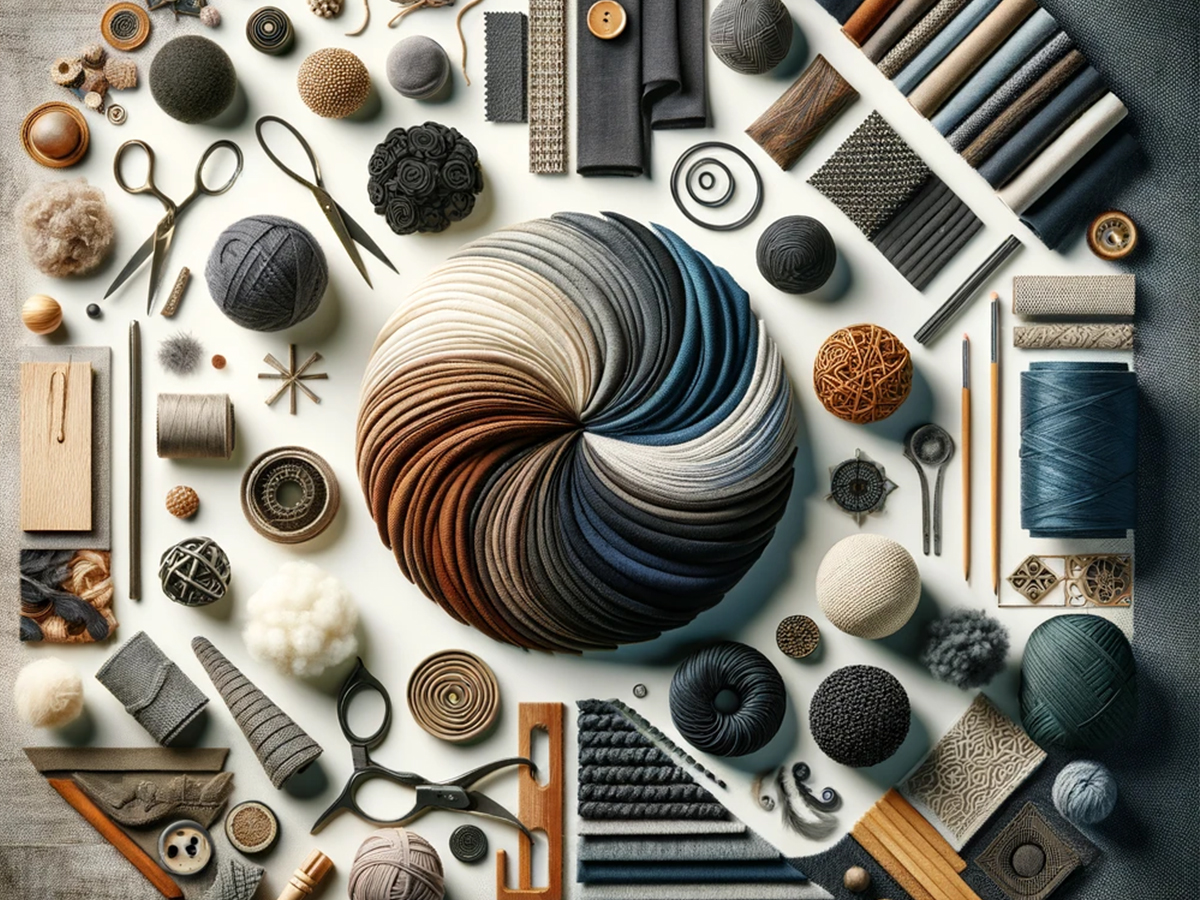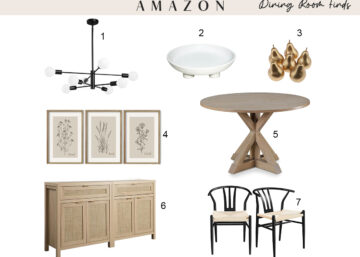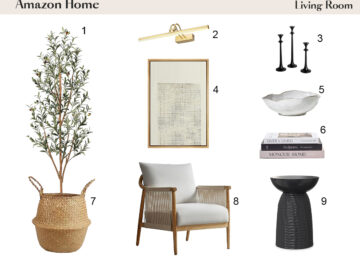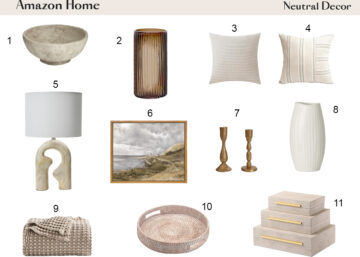Textural Contrast: Mixing Fabrics and Materials
Understanding Textural Contrast
The Fundamentals of Textural Diversity
At the core of textural contrast lies the principle of diversity. This diversity is not arbitrary but is carefully curated to align with the overall design vision. It involves an understanding of how different textures interact with light, color, and space to create a cohesive yet dynamic environment. Textures can range from the roughness of raw stone to the smoothness of polished metal, each bringing its unique character and emotional impact to a space.
Visual Texture vs. Tactile Texture
To fully leverage the power of textural contrast, it’s crucial to distinguish between visual and tactile textures. Visual texture refers to the perceived surface quality of an object, which can be observed with the eye, such as the grainy appearance of wood or the glossy finish of ceramic tiles. Tactile texture, on the other hand, relates to the physical feel of a surface when touched. The interplay between these two types of textures adds layers of complexity to interior spaces, enriching the user’s experience by engaging both sight and touch.
The Role of Natural and Synthetic Materials
In the dialogue between textures, the choice between natural and synthetic materials becomes a narrative tool. Natural materials like wood, stone, and wool bring an element of the outdoors inside, promoting a sense of calm and connection to the natural world. Synthetic materials, including plastics and metals, offer a contrast with their precision and uniformity, often lending a more contemporary edge to the design. Balancing these elements is key to achieving a harmonious space that resonates with the desired mood and style.
Contrast Through Complementarity
Achieving textural contrast does not solely rely on opposition but also on complementarity. It’s about finding the right balance where different textures support and enhance each other, rather than compete for attention. This approach involves a nuanced understanding of material properties and their impact on the overall design. For instance, combining rough, matte finishes with smooth, glossy surfaces can create a dynamic interplay that adds depth and interest to the space.
Psychological Impact of Textural Choices
The textures we surround ourselves with have a profound impact on our psychological well-being. Rough textures can convey warmth and authenticity, making a space feel more inviting, while smooth textures can evoke a sense of cleanliness and order, contributing to a feeling of tranquility. The strategic use of textural contrast can thus influence the mood and atmosphere of a space, affecting how it is perceived and experienced by its inhabitants.
In the next sections, we will delve into practical strategies for incorporating textural contrast in interior design projects, showcasing how this approach can transform spaces from the mundane to the extraordinary. Through examples and case studies, we’ll illustrate the transformative power of mixing fabrics and materials, providing valuable insights for architects, designers, and homeowners alike.
The Art of Mixing Fabrics
Layering for Depth and Comfort
The strategic layering of fabrics is akin to painting with textures, each layer adding a new dimension to the overall composition. This technique is especially effective in creating inviting and comfortable spaces, where the interplay of various fabric textures can produce a visually rich and tactilely engaging environment. From the plush comfort of velvet upholstery to the crisp elegance of linen drapes, layering fabrics allow for a nuanced exploration of texture that can elevate any interior space.
Fabric Combinations that Speak Volumes
Choosing the right combination of fabrics can communicate a lot about a space’s intended ambiance and functionality. A mix of woolen throws and silk cushions, for instance, can suggest a luxurious yet cozy living area, while a blend of cotton rugs and jute baskets may evoke a more casual, earthy vibe. It’s not just about the physical textures but also the visual impact they create when combined. This selection process requires a keen eye for detail and an understanding of how different fabric textures interact with each other and the surrounding materials.
The Importance of Contrast and Harmony
The key to mastering the art of mixing fabrics lies in balancing contrast and harmony. High-contrast combinations, such as smooth leather against coarse burlap, can create a striking visual effect that draws the eye and adds character to a room. Meanwhile, harmonious blends, using fabrics with subtle textural differences, can produce a soothing and cohesive look. The goal is to achieve a balanced composition that resonates with the desired aesthetic without overwhelming the senses.
Textural Themes as a Guiding Principle
Establishing a textural theme can serve as a guiding principle in selecting and combining fabrics. Whether aiming for a minimalist, industrial, or bohemian style, the chosen fabrics should reflect and enhance the theme. This thematic approach ensures consistency throughout the space, with each fabric selection contributing to a unified design narrative. It allows for creativity within a defined framework, ensuring that the textural contrast enhances rather than detracts from the overall design concept.
Tactile Experiences that Transform Spaces
Ultimately, the art of mixing fabrics is about creating tactile experiences that transform spaces into places of comfort, inspiration, and beauty. By carefully selecting and combining different fabric textures, designers can create interiors that not only look stunning but also feel rich and inviting. This sensory richness adds a layer of complexity to interior designs, making them not just visually appealing but also emotionally resonant.
Integrating Materials in Interiors
Crafting Cohesion with Contrasting Materials
The deliberate integration of contrasting materials within interior spaces is a nuanced art that balances visual appeal with functional pragmatism. This process involves more than just selecting aesthetically pleasing materials; it requires a deep understanding of how these materials interact within the context of the space, the lighting, and the intended use of the area. The goal is to craft a cohesive environment where each material enhances the others, creating a unified and inviting atmosphere.
The Dialogue Between Hard and Soft
One of the most effective strategies in material integration is the dialogue between hard and soft surfaces. This contrast can define spaces, delineate functionality, and add visual and tactile interest. Hard surfaces, such as concrete, metal, and glass, provide a sense of stability and durability. They reflect light, contributing to the brightness and perceived spaciousness of an area. Soft materials, like textiles, wood, and plush carpets, absorb sound, offer comfort, and bring warmth to the space. The juxtaposition of these materials can create a dynamic interplay that enriches the sensory experience of the space.
Enhancing Spatial Perception with Material Choices
Materials have the power to alter the perception of space. Light, reflective materials can make a room appear larger and more open, while dark, absorbent materials can create a sense of intimacy and coziness. Understanding this principle allows designers to manipulate spatial perception through material choices, strategically using them to achieve the desired effect, whether it’s to make a space feel more expansive or to create a snug, secluded corner.
Sustainable and Innovative Material Integration
In today’s design landscape, the integration of sustainable and innovative materials is not just a trend but a necessity. The use of recycled, eco-friendly, and sustainably sourced materials is becoming increasingly important. These materials are not only beneficial for the environment but can also introduce unique textures and stories into a space. For example, reclaimed wood not only adds warmth and history to a room but also tells a story of sustainability and conscious living. Similarly, innovative materials like bio-glass or recycled plastics offer a contemporary feel with a low environmental impact, showcasing the possibilities of modern technology in design.
The Psychological Effects of Material Choices
The psychological impact of material choices in interiors is profound. Materials can evoke memories, influence mood, and affect well-being. Natural materials like stone and wood are often associated with stability, grounding, and warmth, making spaces feel more welcoming and secure. On the other hand, metals and glass can convey modernity, clarity, and precision, often used in spaces designed to inspire creativity and focus. Understanding these associations allows designers to craft spaces that not only meet the functional requirements of their clients but also resonate with them on an emotional level.
Practical Applications and Examples
Transforming Residential Spaces
The Living Room: A Harmony of Textures
In a residential living room, the integration of soft plush sofas with sleek, glass coffee tables can create a visually appealing and functional space. Adding a natural stone fireplace as a focal point introduces an element of rugged beauty, enhancing the room’s warmth. This combination not only serves practical purposes but also engages the senses, making the space inviting and comfortable for family gatherings and relaxation.
The Kitchen: Efficiency Meets Aesthetics
The kitchen, often considered the heart of the home, benefits greatly from the thoughtful application of materials. Combining stainless steel appliances with wooden cabinets and quartz countertops achieves a balance between industrial efficiency and natural warmth. The reflective surfaces of metal and glass can help to brighten the space, while wood adds a touch of homeliness, making the kitchen both a practical and welcoming space.
Elevating Commercial Interiors
Office Spaces: Boosting Productivity and Comfort
In modern office design, the use of glass partitions provides transparency and light, fostering an open and collaborative environment. Pairing these with textured rugs and soft seating in breakout areas can reduce noise levels and add comfort, promoting both productivity and well-being among employees. The strategic placement of green walls or planters introduces a natural element, enhancing air quality and connecting occupants with nature.
Retail Environments: Crafting Engaging Experiences
For retail spaces, the combination of materials can significantly impact customer experience and brand perception. Using rustic wood shelves to display products against a backdrop of polished concrete floors can create a compelling contrast that highlights merchandise and draws customers deeper into the store. Incorporating soft lighting and tactile textiles in fitting rooms enhances comfort, encouraging longer visits and increased engagement with the brand.
These practical applications and examples underscore the transformative power of material and texture integration in interior design. Whether in residential or commercial settings, the thoughtful combination of hard and soft, natural and synthetic, old and new materials can create spaces that are not only visually stunning but also deeply resonant with those who use them. Through expert application of these principles, designers can craft environments that reflect the unique identity and values of their clients, making every space a testament to the power of material mastery.
Leveraging 3D Rendering for Textural Design
Enhancing Textural Contrast with Precision
3D rendering excels in showcasing the nuances of textural contrast with unparalleled precision. By accurately depicting how different materials interact with light and shadow, these renderings can convey the tactile sensations of surfaces, from the roughness of exposed brick to the smoothness of polished marble. This visual clarity helps clients understand the impact of material choices on the overall aesthetic and feel of a space, facilitating more informed decision-making.
Customization and Experimentation
One of the most significant advantages of using 3D rendering in textural design is the ability to experiment with an array of materials and textures in a virtual environment. Designers can easily swap out materials, adjust lighting, and modify layouts to explore various design scenarios. This level of customization ensures that the final design not only meets but exceeds client expectations, embodying their unique preferences and lifestyle needs.
Conclusion
Embracing Textural Diversity for Transformative Spaces
The journey through the intricate landscape of textural contrast in interior design reveals a world where materials and fabrics play a crucial role in crafting environments that resonate on a deep, emotional level. This exploration has underscored the importance of integrating diverse textures to create spaces that are not only aesthetically appealing but also functionally robust and psychologically nurturing. For professionals and enthusiasts alike, embracing textural diversity opens up endless possibilities for transforming mundane spaces into extraordinary habitats.
The Future of Interior Design
As we look to the future, it’s clear that the principles of textural contrast and the integration of materials will continue to shape the evolution of interior design. The industry is poised on the cusp of innovation, with advances in technology, such as 3D rendering, enhancing our ability to visualize and realize our most ambitious design concepts. This progression towards a more immersive and interactive design process promises to further democratize design, making it accessible to a wider audience and fostering a deeper appreciation for the subtle nuances that make a space truly unique.
A Call to Action for Designers
For architects, interior designers, real estate developers, and commercial business owners, the message is clear: the thoughtful application of textural contrast and material integration can significantly elevate the quality and character of your projects. By prioritizing these elements, you can create environments that not only meet the practical needs of users but also enrich their lives, offering comfort, inspiration, and a sense of belonging.
Elemental Viz: Pioneering New Vistas in Design
At Elemental Viz, we are committed to pioneering new vistas in interior design, leveraging our expertise in 3D rendering, interior design, and floor planning to bring your visions to life with clarity and precision. By embracing the power of textural contrast, we continue to push the boundaries of what is possible, transforming spaces into functional and aesthetic masterpieces that reflect the unique identities of those who inhabit them. Together, let’s embark on a journey to redefine the spaces of tomorrow, creating environments that are not just lived in but truly experienced.








